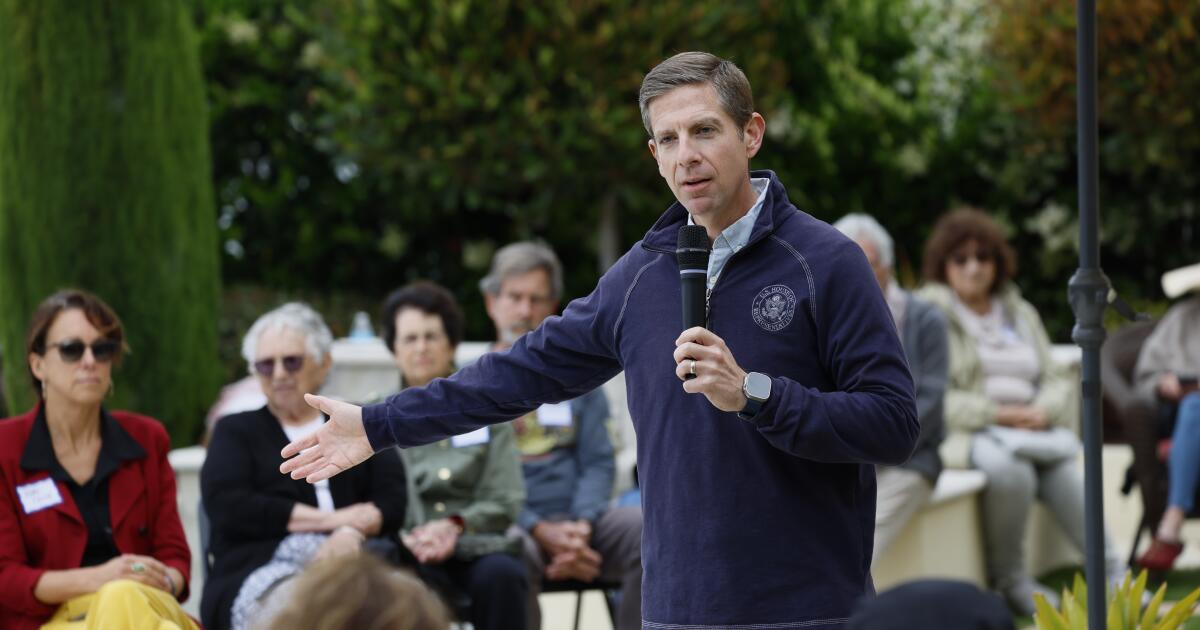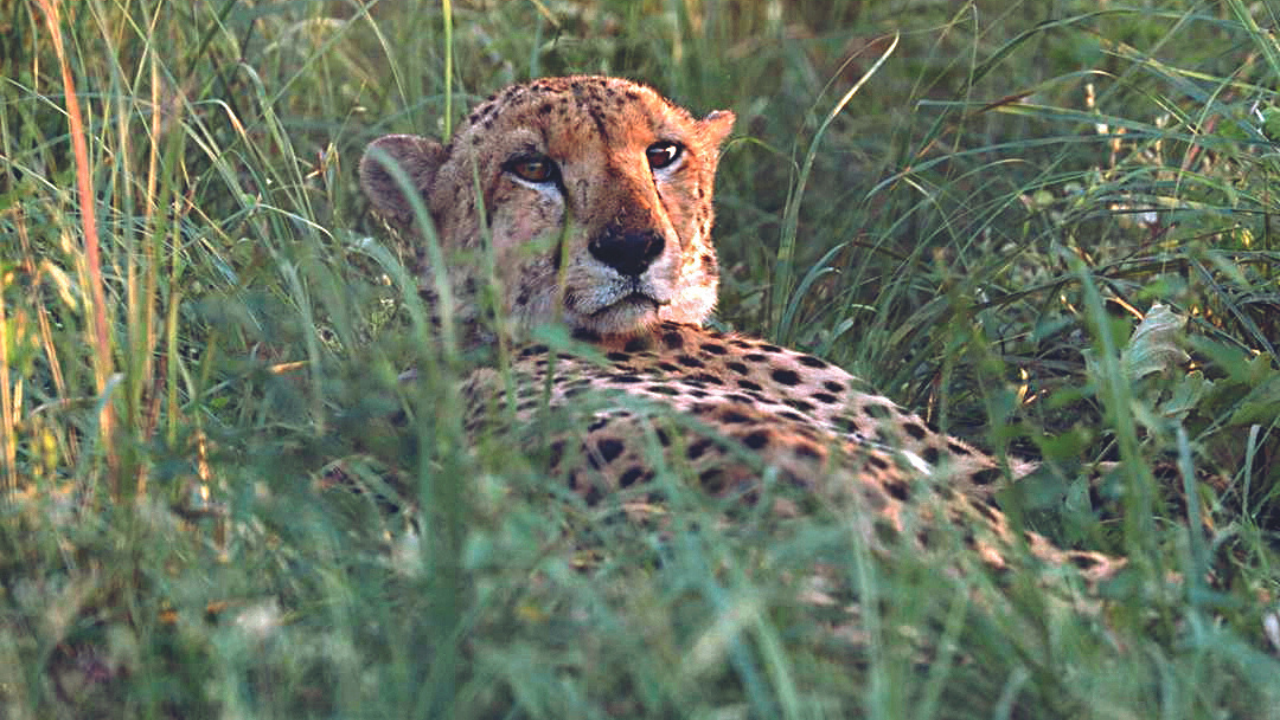Bhopal: A tense situation has arisen in Kuno National Park (KNP) in Sheopur district of Madhya Pradesh. Madhya Pradesh About 30 villagers who work round the clock to monitor and keep track of the cheetahs have stopped work. The reason for the strike? Their refusal to slaughter animals in special enclosures called soft release bomas (SRBs) to feed the cheetahs.
These villagers, predominantly from the Yadav and Gujjar communities, were recruited based on their knowledge of the park’s terrain.However, their religious beliefs conflict with their prescribed duty of killing goats and buffaloes for the cheetahs. They have vehemently rejected this task and have reportedly even rejected the training given to them by park officials for it.
This unexpected attack has hampered the cheetah tracking programme. Park officials are trying to find an alternative solution, considering outsourcing the purchase of pre-cut meat from licensed vendors through tenders. They downplay the immediate impact, assuring that most of the cheetahs are currently within secure bomas and can be monitored by existing staff. To facilitate closer monitoring and potentially boost trust levels, each tracker is assigned a specific cheetah to observe its behaviour within the enclosure. This includes monitoring feeding times, ensuring the cheetah’s well-being and providing enrichment activities where appropriate. Sources say it is challenging to form a close bond with wild animals, but familiarity can aid cheetah acclimatisation and data collection.
An official told the Times of India, “The trackers stopped working and came to Kuno four days ago. They went straight to the chief minister’s office instead of raising the issue at the park or wildlife headquarters. Currently, most of the cheetahs are in secure enclosures and our existing staff can handle them. The absence of villagers will not significantly affect cheetah tracking and monitoring.” The trackers are paid around Rs 9,000 per month and work in shifts.
Undeterred, the villagers are adamant on their demands. Their representatives approached Chief Minister Dr Mohan Yadav’s office for intervention and highlighted two main points: insurance coverage and exemption from slaughter charges. They could not meet the Chief Minister but managed to present their arguments before his OSD SK Tiwari, who sought further information about the matter from the concerned officials.
“We are on strike and have not received any response from park authorities. Our demands are clear: we cannot participate in the preparation of animals for feeding the cheetahs,” said one tracker.
They want comprehensive insurance to cover any risks associated with their work in the park, including encounters with wild animals or injuries sustained during tracking activities, and their main objection is the need to kill and butcher animals for the cheetahs’ food. Sources say they have refused to compromise on the issue, citing religious beliefs against animal slaughter.
The villagers have made it clear that they will not return to work until their demands are met. The incident highlights the potential conflict between cultural beliefs and wildlife conservation efforts. Kuno National Park, known for recently bringing in cheetahs, now faces the challenge of balancing animal welfare with the religious sentiments of its hired staff. Finding a solution that addresses both concerns is crucial to ensuring the smooth functioning of the cheetah monitoring program.
The already tense situation in Kuno National Park is often further complicated by the continued adventures of cheetahs venturing outside the protected area. The female cheetah Veera had strayed out of the park boundaries, and had gone farther than ever before. It had reached Baghwala village near the Gwalior-Morena border, which is quite far from the core area of the park. This was the first case of a cheetah venturing so close to a major city. Trackers and officials had spent sleepless nights trying to bring it back. Veera is not the only cheetah evading detection. Another cheetah, Pawan, has also been found wandering outside the park boundaries. Just recently, Pawan was brought back from Karoli in Rajasthan.
Trackers in the region have faced conflict situations. In a recent incident, trackers searching for a leopard that had escaped the park were attacked by villagers in Burakheda village in Morena. The villagers mistook the team for cattle thieves because of their presence at night and their clothing, and opened fire and beat them up. No one was reported to be seriously injured.
Kuno is experiencing a mix of victories and challenges in his ambitious cheetah reintroduction project since the first consignment was relocated from Namibia in September 2022 and released into enclosures by the PM. Narendra Modi. However, a significant milestone was achieved recently when cheetah Gamini gave birth to five cubs, taking the total number of cheetahs born in India to 13. This was the fourth cub born in India and the first produced by a South African cheetah. Kuno now has 26 cheetahs, half of which are cubs.
This is a positive sign for the progress of the project. Before Gamini’s cubs, Flame of Namibia had successfully given birth to three cubs in her second litter, while one cub from her first litter had died.
In addition, cheetah Asha had previously contributed three cubs to Kuno’s growing population. Since the initial translocation of cheetahs from Namibia in September 2022, ten cheetahs have died. Three cubs born to Jwala in May 2023 died as a result of harsh summer temperatures reaching 46-47°C.
The increasing population of cheetahs may require the search for alternative habitats such as the Gandhisagar sanctuary. German researchers have expressed concern about the carrying capacity of Kuno cheetahs. Further studies will be needed to determine this as the cheetahs are establishing their habitat.
These villagers, predominantly from the Yadav and Gujjar communities, were recruited based on their knowledge of the park’s terrain.However, their religious beliefs conflict with their prescribed duty of killing goats and buffaloes for the cheetahs. They have vehemently rejected this task and have reportedly even rejected the training given to them by park officials for it.
This unexpected attack has hampered the cheetah tracking programme. Park officials are trying to find an alternative solution, considering outsourcing the purchase of pre-cut meat from licensed vendors through tenders. They downplay the immediate impact, assuring that most of the cheetahs are currently within secure bomas and can be monitored by existing staff. To facilitate closer monitoring and potentially boost trust levels, each tracker is assigned a specific cheetah to observe its behaviour within the enclosure. This includes monitoring feeding times, ensuring the cheetah’s well-being and providing enrichment activities where appropriate. Sources say it is challenging to form a close bond with wild animals, but familiarity can aid cheetah acclimatisation and data collection.
An official told the Times of India, “The trackers stopped working and came to Kuno four days ago. They went straight to the chief minister’s office instead of raising the issue at the park or wildlife headquarters. Currently, most of the cheetahs are in secure enclosures and our existing staff can handle them. The absence of villagers will not significantly affect cheetah tracking and monitoring.” The trackers are paid around Rs 9,000 per month and work in shifts.
Undeterred, the villagers are adamant on their demands. Their representatives approached Chief Minister Dr Mohan Yadav’s office for intervention and highlighted two main points: insurance coverage and exemption from slaughter charges. They could not meet the Chief Minister but managed to present their arguments before his OSD SK Tiwari, who sought further information about the matter from the concerned officials.
“We are on strike and have not received any response from park authorities. Our demands are clear: we cannot participate in the preparation of animals for feeding the cheetahs,” said one tracker.
They want comprehensive insurance to cover any risks associated with their work in the park, including encounters with wild animals or injuries sustained during tracking activities, and their main objection is the need to kill and butcher animals for the cheetahs’ food. Sources say they have refused to compromise on the issue, citing religious beliefs against animal slaughter.
The villagers have made it clear that they will not return to work until their demands are met. The incident highlights the potential conflict between cultural beliefs and wildlife conservation efforts. Kuno National Park, known for recently bringing in cheetahs, now faces the challenge of balancing animal welfare with the religious sentiments of its hired staff. Finding a solution that addresses both concerns is crucial to ensuring the smooth functioning of the cheetah monitoring program.
The already tense situation in Kuno National Park is often further complicated by the continued adventures of cheetahs venturing outside the protected area. The female cheetah Veera had strayed out of the park boundaries, and had gone farther than ever before. It had reached Baghwala village near the Gwalior-Morena border, which is quite far from the core area of the park. This was the first case of a cheetah venturing so close to a major city. Trackers and officials had spent sleepless nights trying to bring it back. Veera is not the only cheetah evading detection. Another cheetah, Pawan, has also been found wandering outside the park boundaries. Just recently, Pawan was brought back from Karoli in Rajasthan.
Trackers in the region have faced conflict situations. In a recent incident, trackers searching for a leopard that had escaped the park were attacked by villagers in Burakheda village in Morena. The villagers mistook the team for cattle thieves because of their presence at night and their clothing, and opened fire and beat them up. No one was reported to be seriously injured.
Kuno is experiencing a mix of victories and challenges in his ambitious cheetah reintroduction project since the first consignment was relocated from Namibia in September 2022 and released into enclosures by the PM. Narendra Modi. However, a significant milestone was achieved recently when cheetah Gamini gave birth to five cubs, taking the total number of cheetahs born in India to 13. This was the fourth cub born in India and the first produced by a South African cheetah. Kuno now has 26 cheetahs, half of which are cubs.
This is a positive sign for the progress of the project. Before Gamini’s cubs, Flame of Namibia had successfully given birth to three cubs in her second litter, while one cub from her first litter had died.
In addition, cheetah Asha had previously contributed three cubs to Kuno’s growing population. Since the initial translocation of cheetahs from Namibia in September 2022, ten cheetahs have died. Three cubs born to Jwala in May 2023 died as a result of harsh summer temperatures reaching 46-47°C.
The increasing population of cheetahs may require the search for alternative habitats such as the Gandhisagar sanctuary. German researchers have expressed concern about the carrying capacity of Kuno cheetahs. Further studies will be needed to determine this as the cheetahs are establishing their habitat.

















